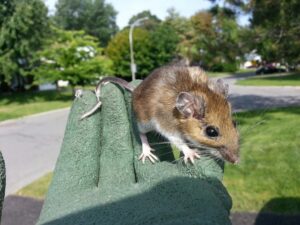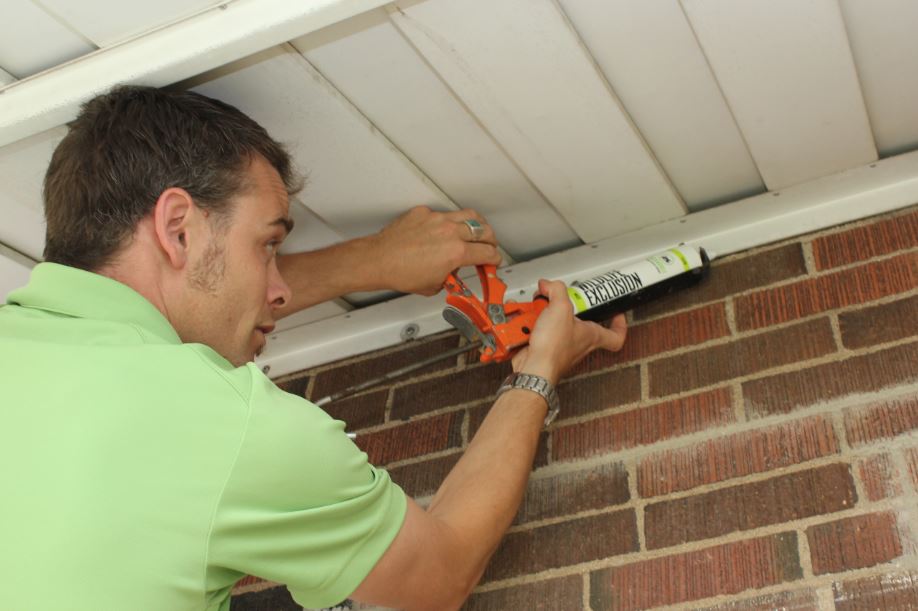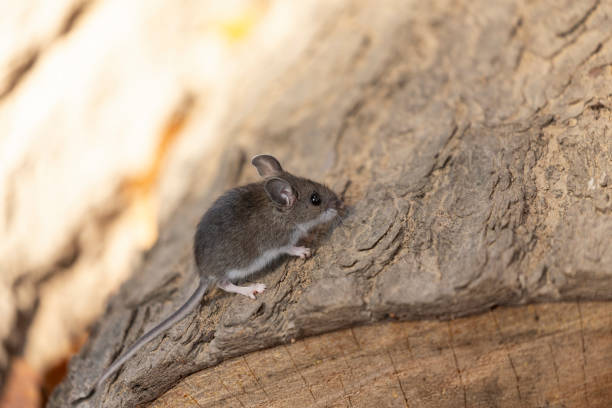It can be difficult to tell the difference between a deer mouse and a white-footed mouse because they are two different species of the same genus, and the differences can be subtle. Nevertheless, if either species is present in your home, you require professional mouse removal as soon as possible because both species can carry hantaviruses that cause severe pulmonary illness in humans.
The Difference Between a Deer Mouse and a White-Footed Mouse
Part of the confusion between the two species is that, even though one is specifically called the “white-footed mouse,” both species have white feet and white underbellies. They also have large eyes and rounded ears, giving them what some people consider to be the quintessential mouse look.
A scholarly paper published by the University of Nebraska — Lincoln identifies some of the key differences between the two species:
| White-Footed Mouse | Deer Mouse | |
| Range | Most of the United States east of the Rockies; southern portions of Nova Scotia, Quebec, Ontario, Saskatchewan, and Alberta in Canada | Most of the U.S. and Canada, excluding some of the northernmost regions and parts of the Southern states |
| Habitat | Primarily brushy or wooded areas | Primarily woodlands, but can live in just about any ecosystem, including deserts |
| Body length (excluding tail) | Approximately 10 cm (4 inches) | Approximately 5 cm to 7.5 cm (2 inches to 3 inches) |
| Tail length | Shorter than the body, approximately 5 cm to 10 cm | Approximately the same length as the body |
| Top coat colour | Ranges from pale to reddish brown | Ranges from reddish brown to grey |
| Tail markings | Dark on top, white on bottom, with a distinct division between the two | Darker hair on top gradually fades to lighter hair on the bottom |

According to the Assistant Curator of Mammal at the Royal Ontario Museum, the single most reliable feature is the throat hairs.
If you flip the mouse over, you’ll notice both species have white throat hairs. However, if you blow on its throat, the hairs of the deer mouse are grey at the base. They only have white on about half of their length. For the white-footed mouse, the hair is fully white. However, while this may be the most reliable way to tell the two species apart, it is not advisable for you to try to pick up or handle the mice. Doing so could put you at risk for injury as the mouse may bite or scratch in self-defence. It could also expose you to diseases.
Both white-footed mice and deer mice can carry hantaviruses. Not all members of each species are carriers, but because hantaviruses can be deadly and have no cure or vaccine, it is safest to assume that if you have mice of either species in your house that they are carriers. Hantaviruses typically spread through mouse urine or feces, so it is imperative to use protective gear when cleaning up after them or, better yet, to have professionals take care of it as part of a mice removal plan.
How To Prevent Mouse Infestation
Mice come into human homes looking for food, water, and shelter. The two most important things you can do to prevent an infestation are to close off entryways by which they can get in and avoid leaving food and water out for them. Here are some specific things you can do to deter mice:
- Store food, including pet food, in airtight containers
- Inspect your home’s exterior for small cracks or holes, remembering that mice only need a space the width of a dime to get through
- Clean up crumbs from floors and counters after cooking
- Replace weather stripping around doors and windows and fill in any gaps with caulk
- Wash dishes after every meal
- Install sweeps under exterior doors
Now That You Know the Difference Between a Deer Mouse and White Footed Mouse, Call Skedaddle for Mice Removal
We have been removing wildlife from homes for over 30 years. Our well-trained technicians know how to get rid of mice humanely and how to clean up after them safely.
We have been removing wildlife from homes for over 30 years. Our well-trained technicians know how to get rid of mice humanely and how to clean up after them safely.
Mice can enter your home through a 6-millimetre opening, about the width of a dime. It can be hard for the untrained eye to locate and recognize such openings as potential mouse entry points. Furthermore, homeowners often overlook openings that are built on purpose into the exterior of their homes that can nevertheless allow mouse entry, such as weep holes in brick walls, openings for utility lines, and vents for the HVAC system.
Our technicians are trained to recognize all possible mouse entry points and are diligent in looking for them from top to bottom, closing them off where we find them. If there is an active infestation, we install one-way doors over mouse entry points so that they can’t get back in when the mice go out to find food. We install heavy mesh over vents and weep holes so they can still perform their intended function without providing entry points for mice.
Once the entry points are closed off and the mice are removed, our technicians use specialized training and the latest safety tools to clean any contamination left behind by the mice without exposing your family to pathogens.
Don’t hesitate to contact us to schedule an assessment of your home or with any wildlife-related questions that you are looking for help with.





